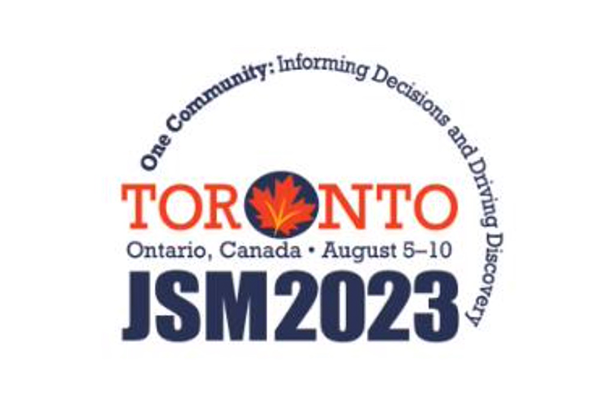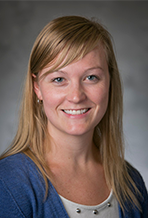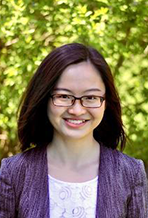
In August, 28 faculty and staff members from the Duke Department of Biostatistics and Bioinformatics showcased their work at the largest gathering of statisticians and data scientists in North America. The Joint Statistical Meetings (JSM) conference, held in Toronto, Canada from August 5-10, allowed for an exchange of ideas, a time for inspiration, and moments of reconnection. Faculty and staff from the department served as speakers, co-authored presentations, or chaired and organized seminars. This year’s theme was One Community: Informing Decisions and Driving Discovery.
The five-day conference featured invited and topic-contributed sessions, poster sessions, roundtable discussions, professional development courses, workshops, and award ceremonies. “Attending JSM and presenting my work this year allowed me to connect with quantitative colleagues across the world to discuss my work as well as learn about theirs,” said Samantha Thomas, MS, principal biostatistician in the Department of Biostatistics and Bioinformatics.

JSM fosters a collaborative space and unique learning opportunity for statisticians from all industries. “We have very few opportunities to present our work to a large audience, so attending JSM offers several advantages,” said Roland Matsouaka, Ph.D., associate professor in the Department of Biostatistics & Bioinformatics. He’s been attending the conference since he was a graduate student at Harvard University.
“People have the chance to ask questions face-to-face and get a better understanding of the work. Presenting is always very helpful professionally, and in terms of what we do as scientists,” Matsouaka said. “You get to showcase what’s new, what’s trending, and how people can improve their work. It's also a way for us as a department to illustrate the important work we’re doing here at Duke.”
Topics discussed ranged from statistical applications to methodology and theory, to analytics and data science. Thomas presented 'Using Hierarchical Clustering to Inform Symptom Identification for Breast Implant Illness (BII)', a study aimed at developing formal diagnostic materials.

BII isn’t considered a diagnosable condition, and it’s unclear how many women suffer from it. “It doesn’t have a specific set of symptoms and most often lacks imaging or laboratory confirmation,” Thomas said.
She and her team examined symptoms reported with self-identified breast implant illness and assessed which symptoms occur simultaneously using hierarchical clustering. “My work is very applied, so it is a bit different from many of the presentations given at JSM,” Thomas said. The study revealed that patients who self-reported BII tend to experience certain sets of symptoms, but more research is needed in order to define the nature of the illness and intervention methods.
Pixu Shi, Ph.D., assistant professor in the Department of Biostatistics and Bioinformatics, presented, Dimension Reduction for Longitudinal Microbiome Data, which introduced TEMPoral TEnsor Decomposition (TEMPTED), a dimension reduction method created by Shi and her team. It’ll be especially helpful for studies with high-dimensional longitudinal datasets.

“This is currently the only method for longitudinal microbiome data that can accommodate flexible temporal sampling without discarding or imputing samples or discretizing time points,” Shi said.
“It also enhances research reproducibility by allowing the transfer of dimension reduction from training data to unseen testing data,” she continued.
Matsouaka's work was the topic of two presentations, both focused on cardiovascular disease, which is a major area of application for his research. One presentation, led by Professor Huiman Barnhart, Ph.D., titled 'Practical Considerations in Using Win Ratio for Clinical Trial Design' was a joint collaboration with other faculty in the Department of Biostatistics and Bioinformatics, including Professor Frank Rockhold, Ph.D., and Associate Professor Yuliya Lokhnygina, Ph.D. Matsouaka also presented a paper titled 'Individually Robust Confidence Interval Estimations for Matched Win Statistics.'
“The goal with my presentation was to explain how to analyze data when working with a limited number of participants in a study, and then I showed simulations on how to accomplish that,” Matsouaka said.

He explained that different methods had to be used when working with a larger pool of participants.
Learning how people think about and approach the same topics differently, and seeing the statistical field embrace machine learning, were some of Matsouaka’s favorite moments from the conference.
JSM is hosted by the American Statistical Association and several other statistical societies like The Caucus for Women in Statistics, the Institute of Mathematical Statistics, and the International Biometric Society (ENAR and WNAR). The next conference will be held August 3-8 in Oregon.